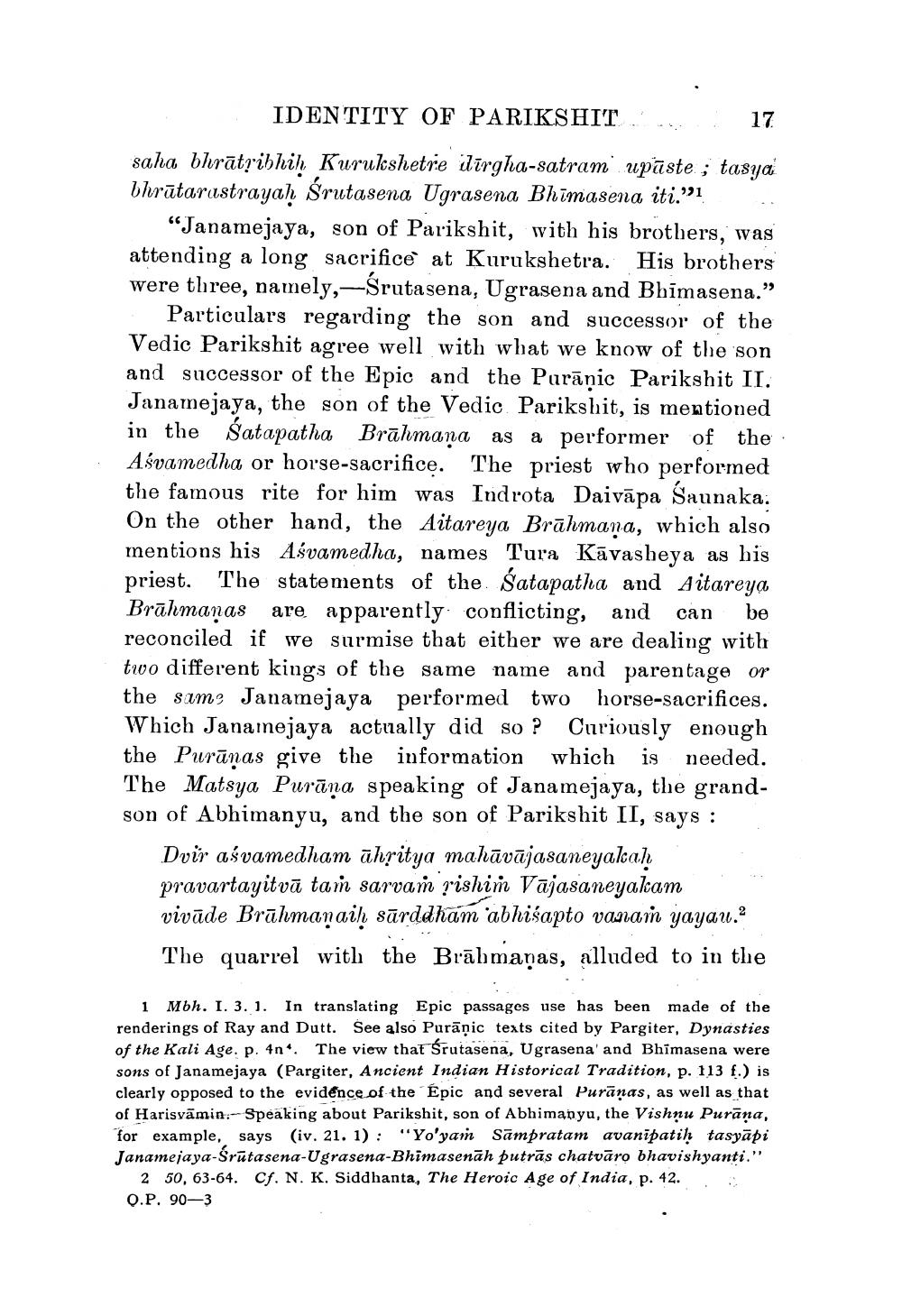________________
IDENTITY OF PARIKSHIT
saha bhratribhih Kurukshetre ilirgha-satram upuste; tasya bhrātarastrayaḥ śrutasena Ugrasena Bhimasena iti."
17
"Janamejaya, son of Parikshit, with his brothers, was attending a long sacrifice at Kurukshetra. His brothers were three, namely,-Śrutasena, Ugrasena and Bhimasena."
Particulars regarding the son and successor of the Vedic Parikshit agree well with what we know of the son and successor of the Epic and the Puranic Parikshit II. Janamejaya, the son of the Vedic Parikshit, is mentioned in the Satapatha Brahmana as a performer of the Asvamedha or horse-sacrifice. The priest who performed the famous rite for him was Indrota Daivapa Saunaka. On the other hand, the Aitareya Brahmana, which also mentions his Asvamedha, names Tura Kavasheya as his priest. The statements of the Satapatha and Aitareya Brahmanas are apparently conflicting, and can be reconciled if we surmise that either we are dealing with two different kings of the same name and parentage or the same Janamejaya performed two horse-sacrifices. Which Janamejaya actually did so? Curiously enough the Puranas give the information which is needed. The Matsya Purana speaking of Janamejaya, the grandson of Abhimanyu, and the son of Parikshit II, says:
Dvir asvamedham ahṛitya mahāvājasaneyakaḥ pravartayitva tam sarvam rishim Vājasaneyakam vivade Brāhmaṇaiḥ sarddham abhisapto vanam yayau.2 The quarrel with the Brahmanas, alluded to in the
1 Mbh. I. 3. 1. In translating Epic passages use has been made of the renderings of Ray and Dutt. See also Puranic texts cited by Pargiter, Dynasties of the Kali Age. p. 4n*. The view that Śrutasena, Ugrasena' and Bhimasena were sons of Janamejaya (Pargiter, Ancient Indian Historical Tradition, p. 113 f.) is clearly opposed to the evidence of the Epic and several Puranas, as well as that of Harisvamin. Speaking about Parikshit, son of Abhimanyu, the Vishnu Purāṇa, for example, says (iv. 21. 1): "Yo'yam Sampratam avanipatiḥ tasyapi Janamejaya-Śrutasena-Ugrasena-Bhimasenah putrās chatvāro bhavishyanti."
2 50, 63-64. Cf. N. K. Siddhanta, The Heroic Age of India, p. 42. Q.P. 90-3




